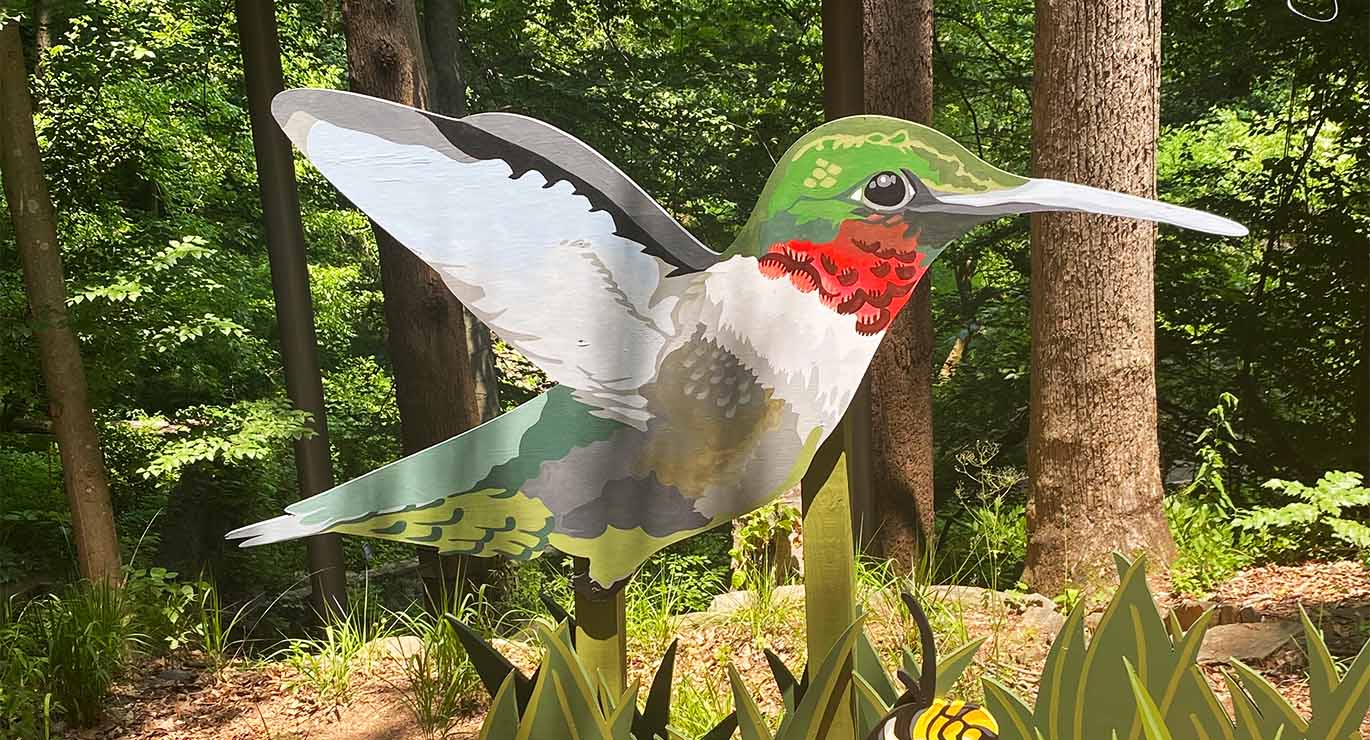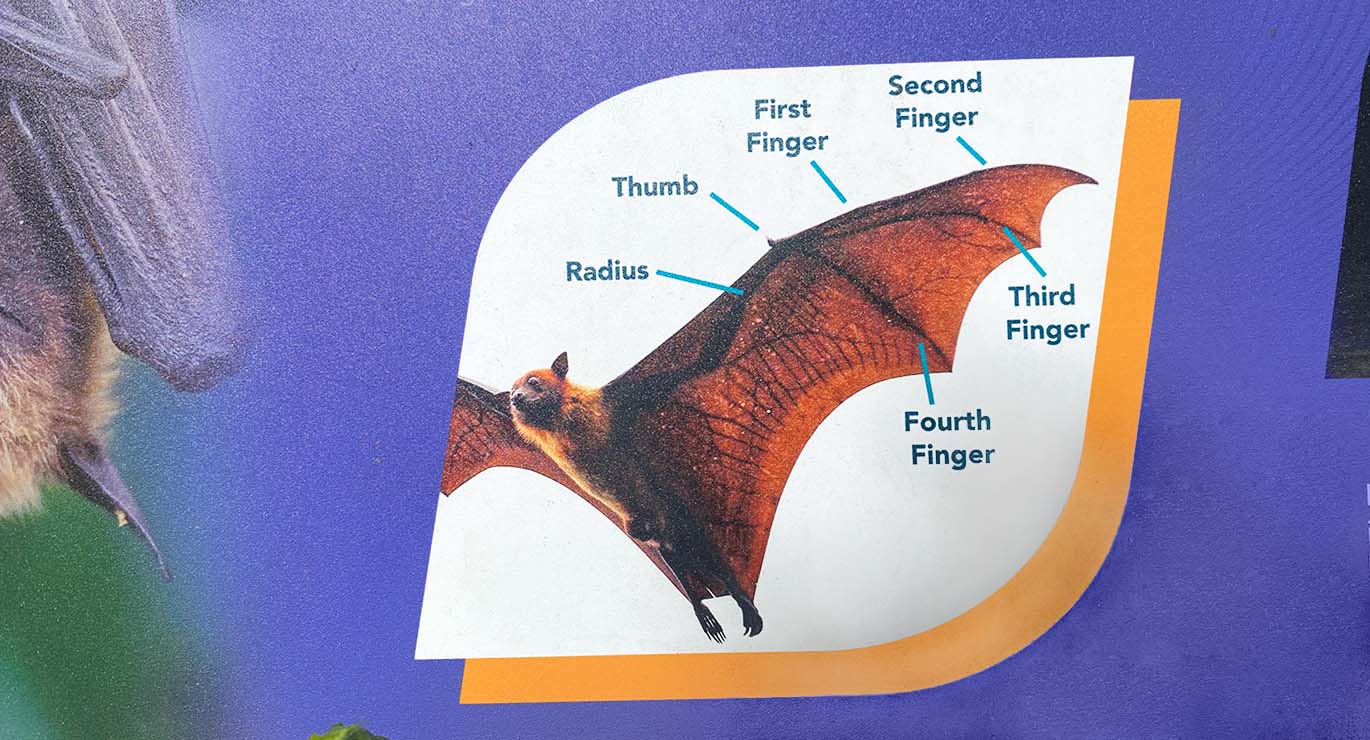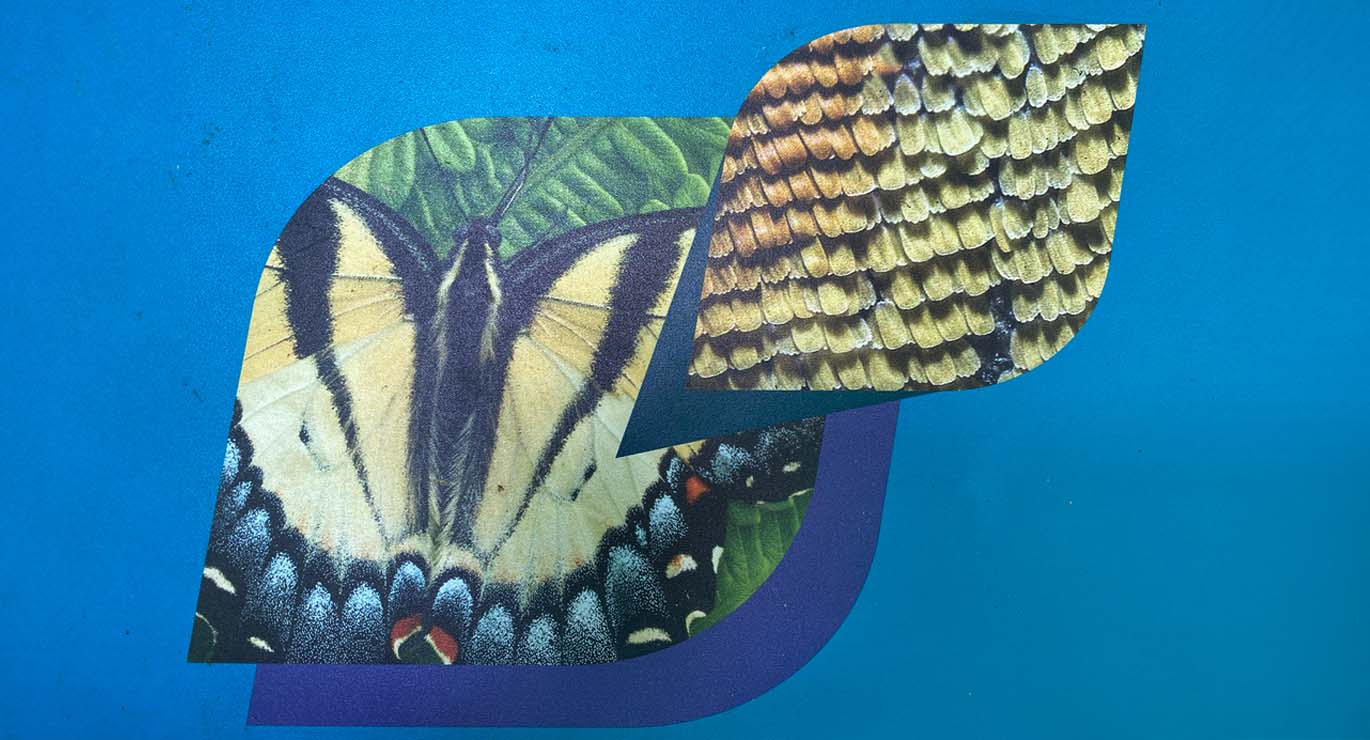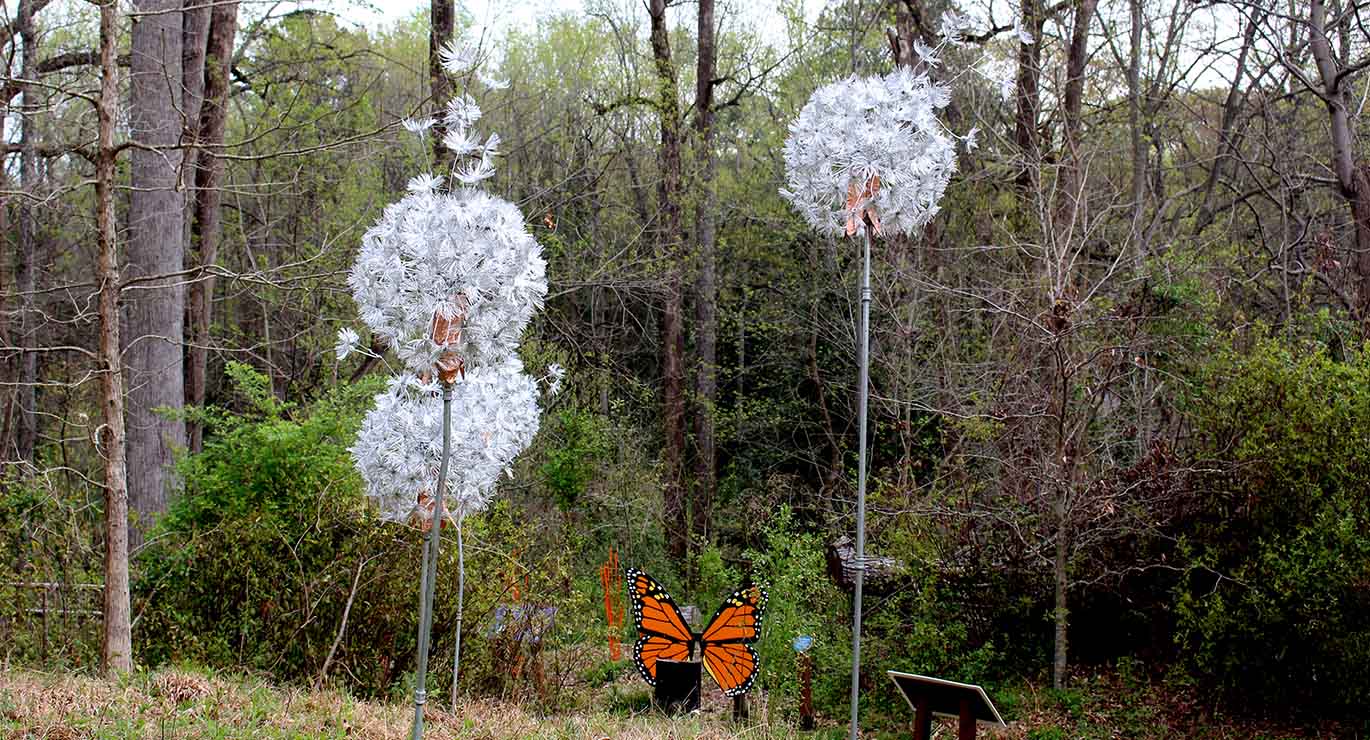May 08, 2024
5 Fun Facts about Flora Fauna and Flight
Discover how plants and animals defy gravity through flight in Fernbank’s artistic outdoor special exhibit: Flora, Fauna & Flight, now on view through June 23, 2024. Here are some fun highlights to look for while exploring!

1. Birds evolved from dinosaurs.
Birds are probably the most well-known flyers in the animal kingdom, but did you know that birds evolved from theropod dinosaurs? Over time, their scales were replaced by specialized filaments allowing them to begin gliding and then eventually the filaments became feathers to allow flying.
Bird wings are remarkable adaptations for the species that fly; their wings are shaped in an upward curve that generates lift and they have strong pectoral muscles that flap and beat to create thrust. Without a strong lift and thrust to overpower gravity and drag, a bird can’t fly. Birds come in all shapes and sizes and live everywhere in the world!

2. Flying squirrels aren’t actually flying.
The name is misleading – flying squirrels cannot truly fly, but they glide. These squirrels don’t have wings that can flap, so they can’t generate the thrust needed to take off. They developed a unique adaptation called a patagium, a membrane of skin that connects their ankles and wrists together like bats, giving flying squirrels the ability to glide. This adaptation likely evolved to help escape predators and move quickly around a habitat while expending very little energy. Flying squirrels will climb high up into a tree and then jump, gliding through the air. The shape of the patagium is like a wing and keeps the squirrel in the air for long distances — up to 150 feet. Flying squirrels include 50 different species found worldwide, including the Southern flying squirrel found right here in Fernbank Forest!
Flying squirrels are nocturnal animals that are active at night so you likely won’t see them during the day, but if you visit Adventure Outpost in WildWoods, you can find the ten hidden flying squirrel sculptures. See if you can find them all!

3. Bats have fingers!
Bats are the only mammal to evolve true, powered flight. All other “flying” mammals like flying squirrels are just gliding. Unlike a bird’s wing, which is supported mainly by an arm bone, bat wings are mostly supported by their elongated hand bones. Bats also have the patagium adaptation that connects their ankles along the body and to the end of the fingertips.
Bats can be found all over the world, including some species in Fernbank Forest such as the eastern red bat and big brown bat. Bats are nocturnal animals that come out at night to catch food, like moths and mosquitoes.

4. Butterfly wings are highly technical.
All insect wings are made of tubes of exoskeleton and a thin chitin membrane and are mostly transparent. While this is also true for butterflies, their wings are covered in tiny scales arranged like roof shingles which results in a stunning variety of patterns. Butterflies may look clumsy as they flutter through the air, but their wings are highly technical. A butterfly’s wings act like giant rudders on a ship allowing them to change direction very quickly, which may be helpful to escape predators. The patterns on butterfly wings can help with mating and warning predators.

5. Dandelion seeds can travel up to 62 miles!
Animals are not the only living organism that use the forces of flight to their advantage. Plants take advantage of these forces as well. Dandelions seem to spring up everywhere, including cracks in concrete. One reason these wildflowers are so widespread is because their seeds seemingly fly through the air. The top of each seed is covered with about 100 tiny filaments, together called a pappus. As the seeds release from the seed head and gravity pulls them towards the ground, the pappus creates lift. This lift allows the seed to glide along with the wind. Dandelion seeds have been known to travel up to 62 miles!
Flora, Fauna & Flight is now open until June 23. For more information on this exhibit: Visit the Flora, Fauna & Flight page.









